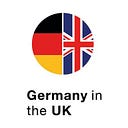The Fall of the Berlin Wall and German Unity

For 41 years, Germany was divided in two. The symbol of of this division was the Berlin Wall that split the city into East and West. When the Wall finally came down in 1989, the two “Germanys” began their journey towards reunification. On 3 October 1990, Germany was reunited. Since then the momentous day is celebrated as a national holiday.
Nobody intends to build a wall

15 June 1961 — Thousands had been fleeing former East Germany daily. Plans were made to stem the tide of people crossing the inner German border in Berlin. Rumours of a Wall began to circulate. The head of the German Democratic Republic (GDR) Walter Ulbricht famously lied when he claimed that “Nobody intends to build a wall.”

13 August 1961 — The wall is erected and Berlin awakes to find the city divided. Overnight, roads are closed and barbed wire fences seal the border, and families are torn apart. Some flee via buildings along the newly created border. Work is fast: within days the barbed wire is replaced with a wall. Eleven days later, the wall claims its first victim — Günter Litfin is shot as he attempts to swim to West Berlin. At least 139 people died trying to cross the wall between ’61 and ‘89.
My dear fellow Germans, we have come to tell you that you are free to leave

30 September 1989 — Thousands of East Germans wanting to leave the GDR flee to Czechoslovakia, Hungary and Poland to seek refuge in West German embassies. German Foreign Minister Hans-Dietrich Genscher is able to negotiate a deal with East Germany for the refugees to leave to the West.
When Genscher arrived at the embassy in Prague, 4,000 East German refugees were camped on the grounds. He then took to the balcony to announce the deal: the people occupying the embassy can leave the country. Several thousand East German refugees were taken to West Germany in special sealed trains.
The Peaceful Revolution

9 October 1989 — Monday Demonstrations were held in Leipzig during September. Thousands called for more democracy and freedom of speech. Protests spread throughout the country. The GDR tried to suppress them by arresting, intimidating and beating protesters.
Under threat of a violent and bloody crackdown, protests were held on 9 October. 70,000 took to the streets, making it the largest protest ever seen in East Germany. Protesters chanted: “No violence!” and “We are the people!” The police were unable to intervene, and the peaceful march inspired more protests across East Germany in the following weeks.

4 November 1989 — By November, the GDR was unable to stem the tide of popular discontent: 500,000 protesters were on the streets in Berlin.
“Immediately … with immediate effect”
In response to to the protests, the GDR planned to gradually relax travel restrictions. But during a live press conference a senior official jumped the gun. When asked about the relaxation of travel restrictions, Günther Schabowski gave an awkwardly worded answer, which resulted in thousands of East Germans heading to border crossings.

The news spread like wildfire, and vast numbers of East Berliners headed to the Berlin Wall. Confusion reigned for several hours as the crowds increased. At 11.30pm, guards at the Bornholmer Straße crossing relented and opened the border.
After 28 years, 2 months and 28 days, the wall was finally open, and the road to German reunification was now free.
German Unity

22 December 1989 — Brandenburg Gate reopened. A symbol of division became a symbol of unity as 100,000 people attended the official reopening of Brandenburg Gate after 28 years.
12 September 1990 — Within 12 months of the fall of the Berlin Wall, West and East Germany became a reunified country. The 2+4 Treaty signed by East and West Germany and the 4 allied powers on 12 September 1990 granted a United Germany full sovereignty.
3 October 1990 — German reunification came into effect on this day: the Day of German Unity.
Click here for our Instagram story with video footage, images and more
